Heb je hulp of advies nodig?+44 (0)1782 454499
PRODUCTEN GEBRUIKT IN DIT PROJECT
Hoewel dit niet per se een uitputtende lijst is, werden de volgende gereedschappen en materialen, geleverd door Easy Composites, in dit project gebruikt.
De hoeveelheid die hieronder wordt weergegeven, is de geschatte hoeveelheid die in het project wordt gebruikt, afgerond naar de dichtstbijzijnde beschikbare kitgrootte of hoeveelheid.
STARTER-SET(S)
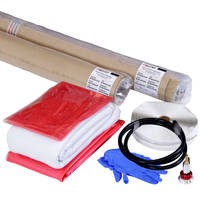
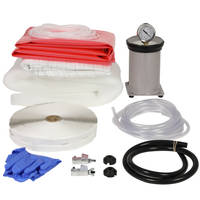
MATERIALEN & VERBRUIKSARTIKELEN
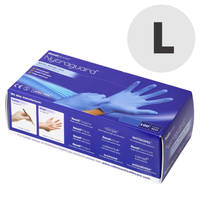
GEREEDSCHAP & UITRUSTING
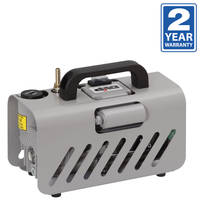
HARS & PIGMENTEN
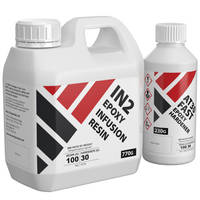
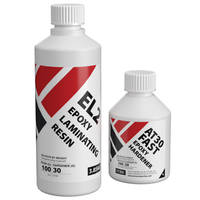
VERSTERKINGEN
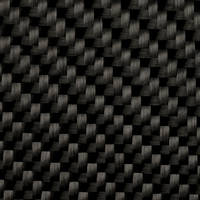
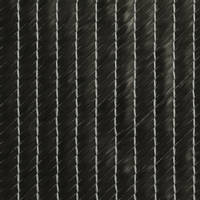
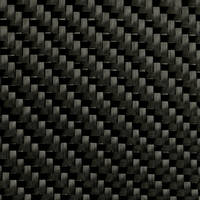
VIDEO HANDLEIDING
Hoe Koolstofvezelplaat Maken - 3 Alternatieve Methoden - Video Tutorial
Het doel van deze handleiding is om te laten zien hoe gemakkelijk hoogwaardige koolstofvezelplaat kan worden gemaakt voor zowel cosmetische als structurele toepassingen en om je te helpen bij je keuze voor de productietechniek en materiaalkeuze om een plaat van commerciële kwaliteit te maken die precies aan je eisen voldoet.
Zelfs als je niet van plan bent om je eigen koolstofvezelplaat te maken of als je die nodig hebt, moet deze gids je een beter inzicht geven in hoe koolstofvezelplaten gemaakt kunnen worden en hoe factoren zoals vezeloriëntatie en productiemethode hun gedrag en prestaties aanzienlijk kunnen beïnvloeden.
De drie verschillende fabricagemethoden die we zullen bekijken om onze platen te maken zijn een eenvoudig hand lay-up proces waarbij droge koolstofvezels met de hand worden gelamineerd met epoxyhars, harsinfusie waarbij we een vacuümproces gebruiken om epoxyhars door droge koolstofversterking te infuseren en tot slot ovenhardende prepreg waarbij we niet-uitgeharde prepreg koolstofvezel gebruiken, vacuüm verpakt en onder vacuüm in een oven uitgehard.
Hieronder vind je een korte beschrijving van de materialen en het proces dat wordt gebruikt in elk van de praktische segmenten van de video bij het maken van koolstofvezelplaat. Alle voorbeelden zijn gelegd op conventionele glasplaten die zijn geprepareerd met Easy-Lease Chemical Release Agent.
UITSPLITSING TUTORIAL
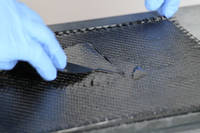
1. Handoplegging
Er zijn twee verschillende handgelaagde koolstofvezelplaten geproduceerd, één met 6 lagen 100g unidirectionele koolstofvezel en één met afwisselende lagen 210g 2/2 twill koolstofvezel en 300g +/- 45° biaxiale koolstofvezel.
EL2 epoxyhars wordt met een lamineerborstel bevochtigd in de wapening en dan wordt een laag peel-ply aangebracht op de achterkant van de plaat om overtollige hars uit het laminaat te drukken en ook een hechtbare textuurafwerking achter te laten.
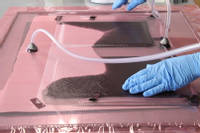
2. Hars infusie
Er worden twee verschillende laminaten gebruikt in de harsinfusiedemonstratie: één met dezelfde afwisselende lagen van 200g 2/2 twill koolstofvezel en 300g +/- 45° biaxiale koolstofvezel die worden gebruikt in de hand-layupdemonstratie en de andere met 6 lagen van 650g koolstofvezel. De platen zijn geïnfuseerd met IN2 epoxy-infusiehars.
De wapening wordt bedekt met een laag peel-ply die overmaats wordt gesneden om een harsonderbreking te creëren voordat een laag infusiegaas direct over de wapening wordt geplaatst. Hars-infusiespiraal en hars-infusieverbindingen worden op hun plaats gebracht voordat vacuümzakband en VB160 vacuümzakfolie worden gebruikt om de vacuümzakstapel compleet te maken. Het vacuüm wordt geleverd door onze EC.4 compacte composieten vacuümpomp met een harsinfusie opvang pot op zijn plaats om te voorkomen dat er hars in de vacuümpomp wordt gezogen.
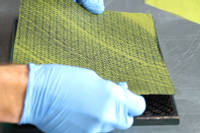
3. Ovengeharde prepreg layup
Een enkel sample is voorbereid met een laag van onze oude Easy-Preg prepreg met een buitenautoclaaf oppervlak boven en onder met drie lagen van onze oude 430g Vari-Preg prepreg (waarvan er twee op een hoek van 45° zijn gesneden) voor de dikte.
Deze pre-pregs zijn opgevolgd door onze XPREG reeks van koolstofvezel pre-pregs.
De lagen prepreg worden geconsolideerd met een lamineerwals met kunststof lamellen voordat ze worden bedekt met een laag R210 ongeperforeerde FEP release film. Een laag ontluchtingsdoek wordt over het laminaat geplaatst en in wat vrije ruimte aan de zijkant van de plaat waarop een doorzakconnector wordt geplaatst (onze connector is uitgerust met snelkoppelingen voor vacuüm). De plaat wordt omhuld met VB160 vacuümverpakkingsfolie en geseald met vacuümsealtape.
Het vacuüm verpakte sample wordt vervolgens in onze binnenkort te introduceren OV301 uithardingsoven geladen om gedurende enkele uren onder volledig vacuüm uit te harden.
DISCUSSIE (27)
Laat het ons weten als je vragen of opmerkingen hebt over deze videotutorial.
LAAT EEN OPMERKING OF VRAAG ACHTER
PRODUCTEN GEBRUIKT IN DIT PROJECT
Hoewel dit niet per se een uitputtende lijst is, werden de volgende gereedschappen en materialen, geleverd door Easy Composites, in dit project gebruikt.
De hoeveelheid die hieronder wordt weergegeven, is de geschatte hoeveelheid die in het project wordt gebruikt, afgerond naar de dichtstbijzijnde beschikbare kitgrootte of hoeveelheid.
STARTER-SET(S)


MATERIALEN & VERBRUIKSARTIKELEN

GEREEDSCHAP & UITRUSTING

HARS & PIGMENTEN


VERSTERKINGEN



DISCUSSIE (27)
Laat het ons weten als je vragen of opmerkingen hebt over deze videotutorial.
LAAT EEN OPMERKING OF VRAAG ACHTER
100% BEVEILIGD
BETALINGSMETHODEN
Easy Composites EU B.V., geregistreerd in Nederland 73601195. Alle inhoud auteursrechtelijk beschermd (C) Easy Composites Ltd, 2025. Alle rechten voorbehouden.